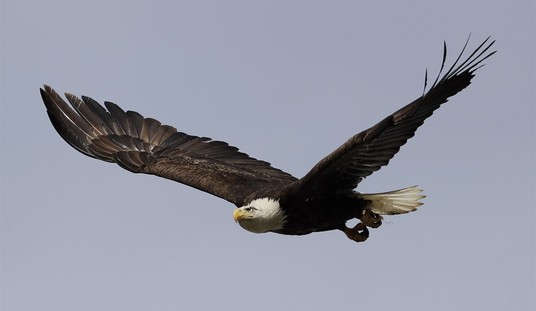I’ve been arguing for years here on PJ Media that for modern jet fighters and bombers, stealth is like safety in the auto industry: The bare minimum required in order to be competitive. Radar and missiles are getting so good and so long-ranged, that the only way to have a chance of staying safe is to pack as many stealth technologies as exist into each platform. And then invent a few more that don’t exist and add those, too.
But I had no idea just how far the trend is expanding.
The Army Times reported yesterday that “the Army is looking to make radar-stopping stealth cammies.”
You read that right: Stealth Army uniforms.
More:
While the Army sorts out throwback service uniforms known as “pinks and greens” and looks to salvage older camouflage by dyeing gear to fit in with the new patterns, its leaders also have their eye on future combat and how even the clothes soldiers wear will fit into that complex space.
That’s why they’ve recently posted a “research solicitation” looking for industry answers on how to shield troops from ground radar that is capable of “large area monitoring.”
The technology is supposed to “absorb or shield the signature of the individual soldier from those radar surveillance devices,” according to the report. And as the military is learning in the Middle East, there’s a real threat from enemy drones. War on the Rocks reported last week that the new battle for air superiority isn’t between high-flying jets, but between soldiers on the ground and low-flying drones. Pablo Chovil wrote that “during my time in Mosul as a member of the 2nd Brigade Combat Team of the 82nd Airborne Division, a remarkably accessible and affordable device arrived on the battlefield. As my battalion helped Iraqi forces retake the city, we encountered some of the first small drones employed in modern conflict.” And the threat they represent is real, he says:
A few days after the attack on the convoy, Counter-Terrorism Service soldiers reported three rotary-wing drones hovering over a command vehicle. As the staff reported the initial information, the drones dropped munitions from altitude, killing and injuring several Iraqis. No longer could the Counter-Terrorism Service or its advisors ignore the threat posed by unmanned aerial systems.
Offering a mix between the methods of traditional insurgencies and the developments of the 21st century, drones will soon be ubiquitous in the world’s conflict zones, and they will not be solely in the hands of nation-states.
Those devices leave a soldier vulnerable to detection. While in the past some of the radar technology was expensive and bulky, advances have brought such systems down to an affordable and transportable level for all manner of adversaries.
So we are already in a situation where jihadis with 7th Century ethics can direct 20th Century mortar fire on First World soldiers using 21st Century toys purchased from the world’s second-most valuable multinational corporation. The bad guys will get even better at this kind of thing. So we must get better at countering them.
Naturally then, the proper response is to try and make individual soldiers as hard to detect as a 200 million-dollar dollar F-22 stealth fighter.
Progress far enough down this road, and we’ll slowly reach the point where technology will make every soldier and Marine as deadly and invisible as a Special Forces operator.
But the question that will really blow your mind is: How much more deadly and invisible will technology make our Special Forces?
And the question our generals must ask is: What will the enemy do in response to all this?
It’s an endless battle, the war between detection and camouflage — and one you want to have the upper hand in when the shooting starts.










Join the conversation as a VIP Member